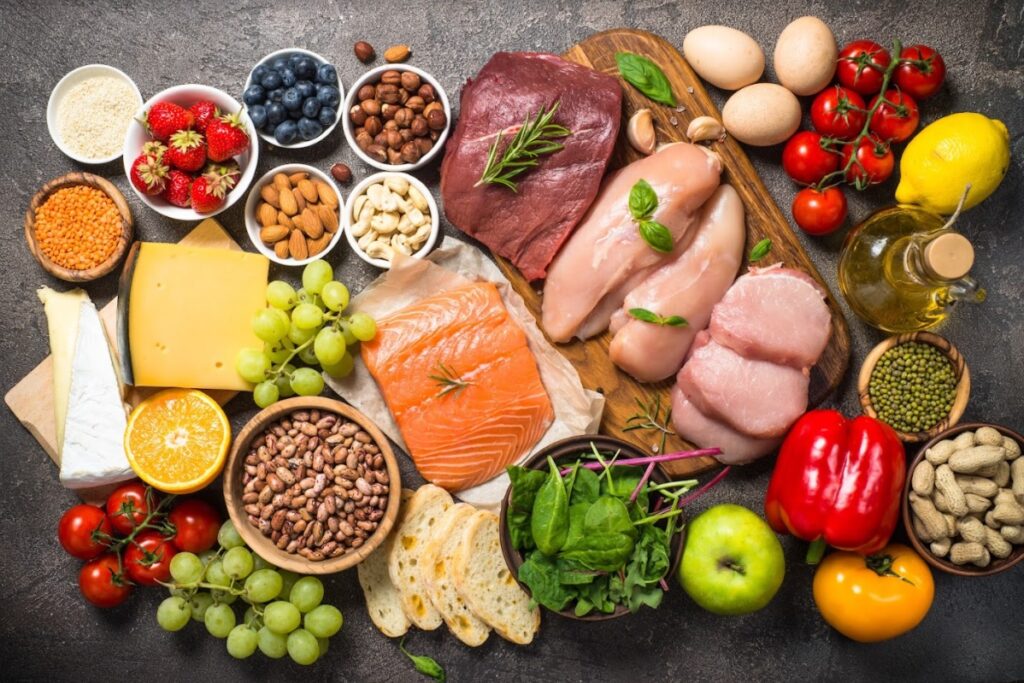Bloggers everywhere are talking about different methods of losing weight: gluten-free diet, fresh juices, depending on blood type, and hundreds of others. You can argue all you want about the effectiveness of each method, but what’s the point if women’s main question is still: “How to lose weight?” Diets often evoke negative associations because they are associated with restrictions and discomfort, but the ketogenic diet is difficult to categorize as such. A diet is a diet high in fat and protein and low in carbohydrates. In this article, a rater from paper service, where you can pay for paper, asked dietitians and nutritionists and compiled a guide to the keto diet.
What is the keto diet?
Our body is designed in such a way that it extracts energy for its work from carbohydrates (glucose). An alternative source of energy is the breakdown of fats, or more precisely, the so-called ketone bodies. When blood glucose is low (without carbohydrates, this is inevitable), the fat reserves go into action. By absorbing them as fuel for the body and brain, extra centimeters start to go.
Accordingly, the goal of dieting is to induce a metabolic state in which the amount of carbohydrates in the diet is reduced to a minimum, and the amount of fat consumed is maximized.
What is ketosis?
It is a state of the body when ketone bodies or ketones become the main source of energy. To get your body running in this mode, you need to observe a carbohydrate fast for 3-4 days and then begin one of the appropriate types of the keto diet.
Types of the ketogenic diet
Classic. This is a low-carbohydrate, high-fat diet. In fact, the entire article is devoted to exactly its classic version, in which the ideal ratio of BWH is 75% fat, 20% protein, and 5% carbohydrates.

Cyclical keto diet
In this case, we mean an alternation of 5 days with strict observance of diet and two days of so-called “cheat meal,” when the consumption of 400-500 grams of carbohydrates per day is allowed, which allows replenishing glycogen reserves.
This option is more often used before or during increased and intensive sports activities. This way of eating helps to speed up the metabolism, burn residual fat and gain lean muscle mass. Many nutritionists insist that a proper diet must be balanced, so of the diet options listed, this is what they prefer.
Targeted keto diet
Suitable for professional athletes, most often, it is used by bodybuilders. In this case, it is allowed to consume carbohydrates an hour and a half before training. This type of ketogenic diet allows you to replenish glycogen reserves so as not to drive yourself to exhaustion and, at the same time, not to go out of ketosis.
Advantages and disadvantages of the keto diet
Benefits of the keto diet
- The ketogenic diet does not involve drastic dietary changes and artificial caloric reductions, which usually lead to weight gain back and sometimes even weight gain after weight loss.
- There is usually a sense of hunger and an increase in stamina.
- With the keto diet, it is possible to lose weight in a short period of time. Therefore, it is often used by public people to prepare themselves for urgent shoots or landmark events.
- Improved quality of sleep. At the initial stage (the first 3-5 days) the process of falling asleep may be disrupted, but once the body gets used to ketosis, sleep normalizes and becomes deeper.
- Increased ability to work. By reducing your carbohydrate intake and replacing it with healthy sources of fat, you can stabilize your blood sugar levels and enjoy the energy and greater mental focus throughout the day.
- Reduced Anxiety Levels. When sleep is normalized, and enough energy appears, your emotional state becomes stable.
Possible damage from the ketogenic diet
- The most common side effects are the possibility of constipation, moderate low blood sugar, or upset stomach.
- Much less commonly, low-carbohydrate diets can lead to kidney stones or elevated acid levels in the body (acidosis).
- Other side effects may include “keto flu,” which includes headaches, chills, sometimes fever, weakness, irritability, and bad breath.
- When your body burns fat stores, it becomes a burden on the kidneys and also increases ammonia levels in the blood.
- Poor diet and lack of balance. As carbohydrate intake is kept to a minimum, there are significant restrictions on the foods you eat.
- Many people note that at first, there is a general weakness of the body, lethargy, and drowsiness.
- Ketone bodies are quite toxic to the body, so it is important not to test your fate on your own and seek professional advice from a nutritionist or a doctor who will observe you in the process of weight loss.
Indications and contraindications
Who should refrain from the keto diet?
- People with liver and kidney disease, high cholesterol, and metabolic disorders.
- Diabetics are advised to experiment with this nutrition only under the supervision of a doctor.
- Pregnant and breastfeeding women.

The keto diet: what can and cannot be eaten?
- Unprocessed meat, that is, without the processes of salting, canning, smoking, etc. Pork, beef, duck, fatty parts of chicken and turkey, bacon, and lard are suitable. Refrain from sausage and sausage.
- Fish and seafood. Salmon, salmon, saury, sardines, mackerel, herring, and any seafood are fine. Avoid breading as it contains carbohydrates.
- Eggs. Eat them in any form: boiled, stuffed, fried in butter, omelets.
- Veggies that grow above ground. Favorites include cauliflower, cucumbers, asparagus, avocados, broccoli, spinach, green beans, and zucchini. Say goodbye to root vegetables: potatoes, beets, onions, carrots, celery root, etc. Use olive oil or butter in cooking.
- Dairy products: cheese, butter, cheese, cream. Sour cream. The main condition is that they must be fatty.
- Nuts. A good option for snacking, except for cashews. This type is better to exclude because of its high carbohydrate content.
- Oils and fats. If we talk about vegetable oils, then give preference to olive oil. Also, coconut oil is very popular, with which you can significantly diversify the flavor of food.
How long does it take to see results on the keto diet?
Many factors influence the rate of weight loss: age, body composition, health status, usual habits, etc.
But if we talk averagely on the keto diet in the first week, you can lose from 2 to 7 kg. Only you should take into account that most of the weight lost will be water. This is because one glycogen (a stored form of carbohydrates) contains 2 to 3 grams of water.
Beginning in the second week, weight loss occurs at a more realistic pace. At this stage, the body gets used to the new eating habits and enters a state of ketosis (using fat for energy instead of carbohydrates).
Speaking of the longer term, according to Endocrine research, 88% of people who were significantly overweight lost about 10% of their original weight in 2 months on the ketogenic diet.
Consider another important fact when losing weight! According to a study published in the Journal of International Society of Sports Nutrition, the recommended rate of weight loss is 1% per week of current weight loss to maintain muscle mass and a healthy metabolism. For people who are overweight or obese, the rate increases to 1.5-2% per week.
Conclusion
A ketogenic diet is a short-term diet focused on weight loss, not on achieving health benefits. The results of clinical studies examining the effects of ketogenic diets are inconsistent, so they should not be practiced for more than a few months and under the supervision of a physician.
